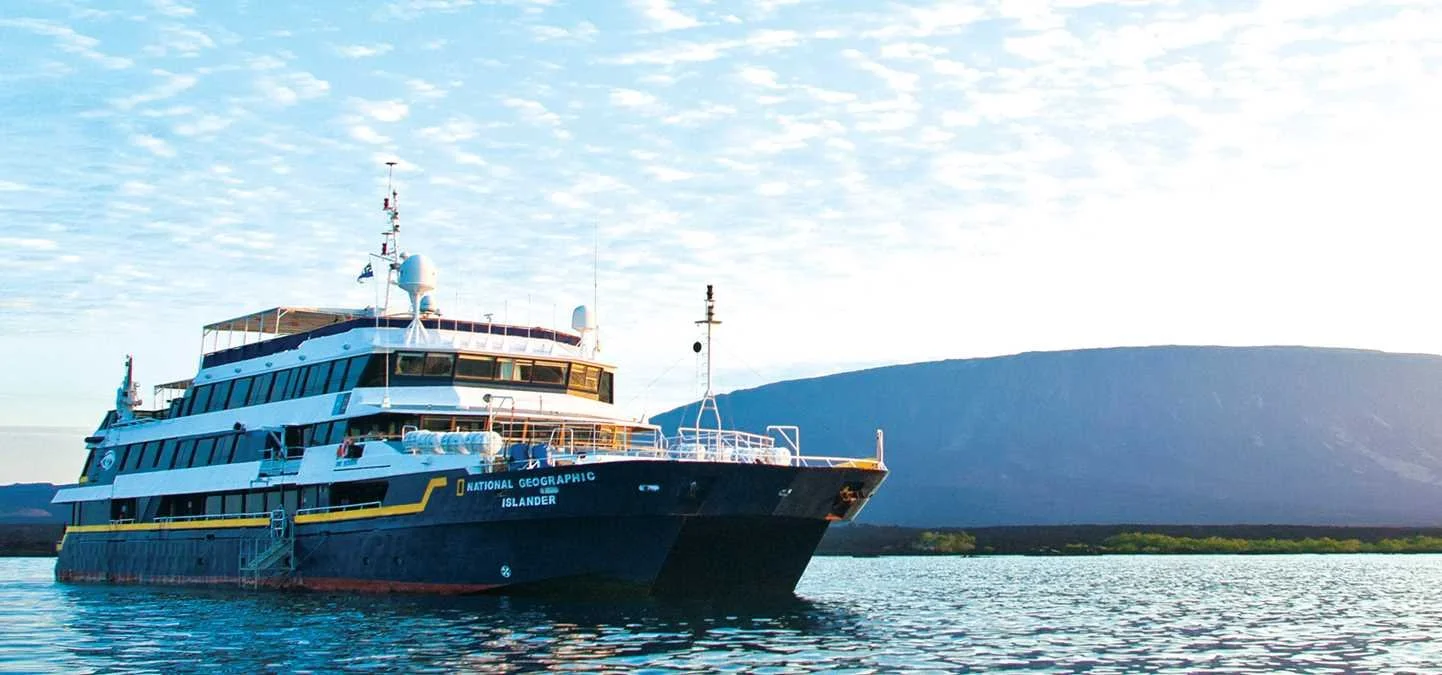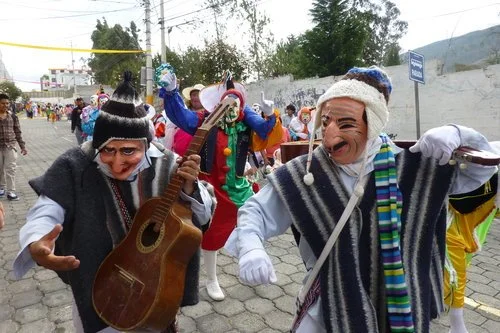GALAPAGOS ISLANDS 7 Days
The Galápagos Islands is a volcanic archipelago in the Pacific Ocean. It's considered one of the world's foremost destinations for wildlife-viewing. A province of Ecuador, it lies about 1,000km (600 miles) off its coast. Its isolated terrain shelters a diversity of plant and animal species, many found nowhere else. Charles Darwin visited in 1835, and his observation of Galápagos' species later inspired his theory of evolution.
Tips:
Getting to the the Galapagos Islands:
The only way for travelers to get to the islands is BY AIR. Travelers must fly from mainland Ecuador (either Quito or Guayaquil) to the Galapagos Island. When you fly into the Galápagos, which takes about 90 minutes from the mainland, you usually land on Baltra, sometimes called South Seymour. It is not possible to cruise from mainland on a tourist-class ship, and there is NO ferry service.
Baltra (Puerto Ayora, Santa Cruz) has more options and is the preferred gateway island.San Cristóbal - some visitors fly into the airport here. A fair number of tour boats depart from here.
Once you arrive on the Galapagos Islands, you have to pay the Galapagos Entrance Fee. The cost depends on your country of origin and age. Make sure to bring cash, as card payments are not accepted! The basic cost is $200 USD/adult.
To enter Ecuador only a valid passport is required. No visas are required for U.S., Canadian, and most European citizens unless you plan to stay more than 90 days.
How long to stay in Galapagos Islands ?
Because it takes time and is expensive to get to the Galapagos Islands, plus the first and last days of your trip are mostly travel days, we recommend that you spend at least 5 days in the Galapagos. The majority of travelers go to the Galapagos for 7 or 8 days. The more days you can spend in the islands, the more wildlife you will see, and the better your Galapagos experience.
The best way to capture the best wildlife in Galapagos is by taking a cruise.
You get the opportunity to have more time visiting the islands as the cruise will be navigating from one destination to another in the night.
Trips to the Galápagos venture out to the high seas, and the waters can be rough. Be sure to bring anti-seasickness medication with you. The larger ships, in general, are more stable and enjoyable when the seas get choppy.
What is the difference between First class and Luxury class cruises ?
First-class ships have excellent guides, small but private cabins with hot water and air-conditioning, and passable food.
The main difference between first-class and luxury service is the food; but the cabins are not necessarily much bigger. Some luxury boats also have swimming pools or Jacuzzis.
-
Andean Discovery - cater to all types of budgets and experiences.
Butterfield & Robinson - specializes in the very high-end market.
Ecoventura - operates four first-class ships: the 16-passenger dive boat M/Y Sky Dancer , and the three identical 20-passenger boats M/Y Eric, Flamingo I, and Letty. You can count on this operation having the most experienced guides in the islands.
Galacruises Expeditions - runs four ships of their own and can book passage on a wide range of other boats and ships. Their boats range from tourist-class monohulls to modern luxury catamaran yachts. They do full-service tours around Ecuador and the region.
Klein Tours - is one of the oldest companies operating boats in the Galápagos. The company maintains three first-class ships: the 20-passenger M/Y Coral, the 26-passenger M/Y Coral II, and the 110-passenger M/V Galápagos Legend.
Metropolitan Touring - runs three luxury ships and one luxury hotel (Finch Bay Hotel), and is one of the largest and most professional tour agencies in Ecuador. Consider booking with them especially if you want to mix and match time on shore with time on a ship.
Surtrek - has an uncompromising dedication to authenticity, exceptional service and make the difference between an ordinary vacation and an once-in-a-lifetime experience.
-
Scuba-Diving Trips -- The waters surrounding the Galápagos offer some of the best diving in the world.
-
Bartolome Island - the most photographed landscape island, Pinnacle Rock on Bartolomé. It's also home to a colony of the rare Galápagos penguin.
Española Island - popular island due to the sheer variety and number of creatures that inhabit it.
Fernandina Island -it's the westernmost of the island group and so takes more time to reach. If you decide to go, you'll see what many naturalists consider to be the most pristine of the islands in the Galapagos. The cold-water channel between Fernandina and Isabela is rich with marine life, so there are masses of marine iguanas and sea lions, penguins, manta rays, and sharks.
Genovesa Island - is one of the few islands in the northern region that can be visited, and not all boats in the Galapagos go here.
Isabela Island - the biggest of the island group. here you will find five types of tortoise and some of the best kayaking.
North Seymour Island - this island is all about seabirds, particularly because of the highly photogenic blue-footed boobies.
Santiago Island - the island known for over 50,000 sea lions. Mixed among the sea lions are more marine iguanas and plenty more sally lightfoot crabs.
South Plaza Island - home to one of the largest colonies of land iguanas and sea lions.
<LEARN MORE about each of the islands>
-
Cruise based pros:
—Experience greater wildlife coverage.
—Able to explore different regions of the archipelago and more remote islands within the National Park.
—Each visitor site has scheduled and guided activities.
—All meals are included.
—All expedition activities (snorkeling, kayaking, paddleboarding, glass-bottom boat) are included, free of charge.
Cruise based cons:
—More expensive.
—Cruises operate on set departure dates.
—Limited downtime during the day.
—Do not offer scuba diving.
Land based pros:
—Less expensive.
—Flexible scheduling options.
—Relaxation and exploration activities can be balanced out as you see fit.
—Offer Day Tours to select islands within the National Park.
—Expedition Hotels offer SCUBA Diving.
Land based cons:
—Less wildlife exposure.
—Meals (except for breakfast) are not included.
—Limited number of National Park Islands can be visited. Your not able to visit the farthest islands.
—Expedition activities are not included and cost extra.
-
1. Have $120 USD in cash to enter the National Park .
—To enter the Galápagos Islands you must pay a $20 transit card fee (in cash) in either the Quito or Guayaquil airport, which is essentially your visa to enter the Islands. Once you land in the Galapagos you will then pay a $100 park fee (in cash).
2. Bring lots of sun protection.
—When you visit the Galápagos, you will be located right on the equator, and no matter the time of year or the season, the sun will be strong, and you will burn quicker.
3. It will be hot during the day and chilly at night.
—Normally it will be hot during the day and a little cold at night, so it’s a good idea to bring lighter clothes for the day, and a sweater or two for the night.
4. Plan ahead.
—For most people, a trip to the Galapagos Islands is the trip of a lifetime. Reserve 1 year in advance.
5. Galapagos Island Travel Guide.
6. Travel Adaptors - Type A and Type B
Small Boats (16 to 20 passengers)
For those visitor who are prone to getting seasick our recommendation is to take a catamaran so the individual can have a better experience or also one of the motor yacht luxury cruises because they have better stabilizers.
Medium Ships (20 to 50 passengers)
These ships are agile and capable of guaranteeing comfort in far-off, inaccessible regions. They have all the necessary equipment used to explore and experience the islands. The nice thing about this size vessel is that it is just big enough to feature exclusive site visits to various places within the Galapagos Islands.
M/V Evolution
In October of 2017, a top-to-bottom redesign of the 32-passenger M/V Evolution was completed by Adriana Hoyos, a furniture and interior designer renowned for her work on luxury hotels across the Americas. The ship's refreshed cabins now have a contemporary, boutique hotel aesthetic.
NG Islander
All cabins on the 48-passenger National Geographic Islander have windows, eight rooms have private glassed-in patios, and the ship's two suites have wrap-around views over the bow. The ship also offers deck hammocks, Wi-Fi, and a free digital photo kiosk with a trio of iMac computers. Food served onboard is made with ingredients sourced from farms in the Galápagos whenever possible, and any food imported from the mainland is washed, peeled, and sealed before shipping to reduce the risk of introducing invasive species into the fragile island environment.
Isabella II
The Isabela II offers the amenities of a large ship with the intimacy of a 40-guest small yacht, a unique size for a Galapagos vessel. With an elegant yet relaxed atmosphere she cruises the Galapagos Islands efficiently, allowing guests to enjoy their adventure fully and in style. With just 20 guest cabins, Isabela II’s convivial atmosphere leads to a close-up experience of the unique Darwinian world. Four cabin categories, ranging from 124 to 170 square feet, are arranged around outer corridors. All cabins are spacious and have private bathrooms, hair dryers and a safe.
Large Ships (50 to 100 Passengers)
Galápagos Park officials have set a maximum limit of 100 passengers per vessel, making these the largest ships in the archipelago. Travelers may opt for a large-capacity cruise ship for more space onboard (like bigger hallways and staircases for easier movement around the ship) and increased services, like an onboard doctor. The downside of traveling on a large ship is the time it can take to complete transfers by zodiac from the boat to land destinations. Also, some areas of the Galápagos may be off limits to larger ships.
NG Endeavor II
National Geographic Endeavor II
The 96-passenger National Geographic Endeavor II was fully renovated in 2016. The ship has Wi-Fi, a doctor, SUP gear, a clear-bottom zodiac, a free digital photo kiosk with iMacs, and a spa. Like the Islander, food brought from the mainland is carefully prepared and packaged to prevent the introduction of invasive species to the Galápagos Islands.
Celebrity Flora
Celebrity Flora
The 100-passenger Celebrity Flora features all of the design elements, amenities, and services of its sister ships and then some, including two 1,288-square-foot Penthouse Suites (the largest in the Galápagos), and a marina that can accommodate three zodiacs at a time to facilitate faster transfers from ship to land.
Climate Guide:
The Galápagos Islands, located in the Pacific Ocean, about a 1000 km (600 miles) west of Ecuador, have a tropical and semi-arid climate.
The Islands are located at the confluence of three ocean currents. These currents largely influence the climate which is explained below.
July through November brings the cool, dry season because of the Humboldt Current which brings its chilly water creating a cooler temperature. Experience divers believe it is the best time to explore the waters as the colder water is inviting to more marine life. This is also the ideal time of year to visit if you wish to spot the legendary whale sharks of Wolf and Darwin Islands. The ocean will be rougher this period of the year, especially September and October.
December through June is hot and rainy yet it is also the time when the ocean is the calmest. There may be daily pockets of rain, but they give way to mostly sunny skies.
The busiest tourist months are June, July, and August as well as mid-December to mid-January.
In summary, go during a month depending on the climate you want to experience.
No copyright infringement is intended on this website by travelwildnow.com




















